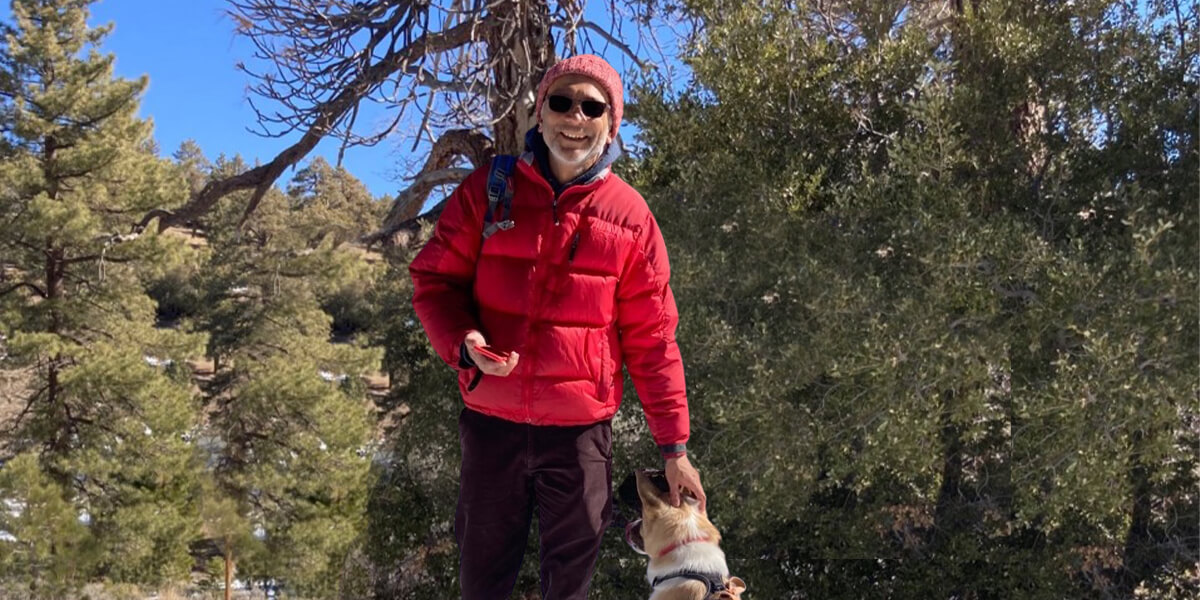
Assad Oberai, Hughes Professor of Aerospace and Mechanical Engineering
Assad Oberai, Hughes Professor of Aerospace and Mechanical Engineering at USC Viterbi School of Engineering, is the latest researcher to be honored as a Fellow of the American Academy of Mechanics. The award is presented to only one individual each year, and Oberai joins a prestigious list of past recipients who have had a transformative impact in the field of mechanics.
Oberai leads the Computation and Data Driven Discovery Group, which designs, implements and applies data-and physics-based models and algorithms to tackle problems in engineering and science. Issues addressed by the group include the need for better detection, diagnosis and care of diseases like cancer, understanding the role of mechanics and physics in medicine and biology, modeling the evolution of multi-physics and multiscale systems, and developing reduced-order models for aerospace and mechanical systems.
We caught up with Oberai on the occasion of the award, and he shared some of his past achievements, goals and how prepares his mind for complex problem-solving:
What types of problems are you currently focusing on, and why are these problems so important to solve?
My lab is tackling several problems in healthcare and sustainability using computational modeling tools from physics and machine learning.
One project is focused on integrating satellite measurements with physics-based computer models of wildfires to better predict the course of an active wildfire. As you might imagine, knowing where a wildfire is heading is critical in planning evacuations and firefighting response. For this project, we are working with a large team led by Professors Jan Mandel (University of Colorado Denver) and Adam Kochanski (San Jose State University).
In a project related to glaucoma, one of the leading causes of adult blindness, we are developing tools to quantify the mechanical damage that occurs in the optic nerve head – the region where the optic nerve meets the retina. To achieve this, we are making use of state-of-the-art ultrasound imaging techniques, physics-based models and machine learning. This project is a collaboration with Professor Qifa Zhou at USC Keck School of Medicine and USC Viterbi School of Engineering.
In another project, related to detecting cancer via a simple blood draw, we are developing computer vision techniques to detect rare cells in immune-fluorescence images of blood, with the goal of identifying cells that are associated with cancer. If successful, this would lead to a relatively inexpensive, fast and accurate way of detecting, diagnosing and staging different types of cancer. My group is working closely with Professor Peter Kuhn’s group at at the USC Michelson Convergent Science Institute in Cancer.
What do you personally consider to be the greatest achievements in your research to date?
About 15 years ago, my dear friend and colleague Professor Paul Barbone (Boston University) and our students and post-docs produced a series of papers that established the foundation of how to identify the health of tissue by investigating its mechanical properties. This area of research is now applied in detecting, diagnosing and treating different types of cancer, along with other biomedical applications that have a significant mechanical component such as cardiovascular disease, glaucoma, and growth and remodeling of tissue.
What are some of your moonshot goals for the coming years?
In the field of wildfire modeling, we are aiming to develop a tool that uses physics, field data (satellite, aerial) and machine learning to accurately predict all likely paths of a wildfire. Our goal is to eventually hand it over to someone who coordinates the firefighting response, so that they can use it in real time to make the best possible decisions, thereby minimizing the disastrous impacts of a wildfire.
Another of my goals relates to the current diagnostic practice for breast cancer. Around 60% of biopsies recommended after a mammogram are negative, and one in 10 cancers are missed overall. Furthermore, the situation is worse for women with mammographically dense breasts. I am confident that we can use all the medical information available and machine learning to develop more accurate predictive models. That is, we can reduce the number of unnecessary biopsies and at the same time reduce the number of cancers that go undetected.
Do you have any hobbies that inform the way you think about computation and data-driven discovery?
Most of my leisurely activity involves hiking and taking long walks in the beautiful Southern California landscape. During these walks and hikes, I often contemplate the hardest problems I am working on, and I sometimes come up with good answers!
Published on April 6th, 2023
Last updated on April 10th, 2023












